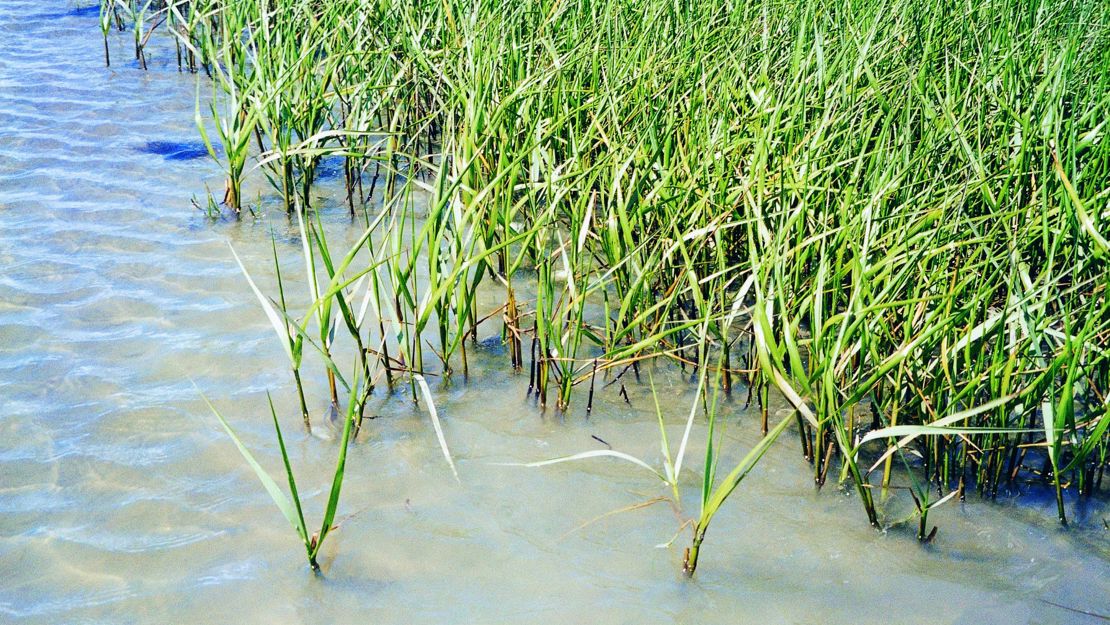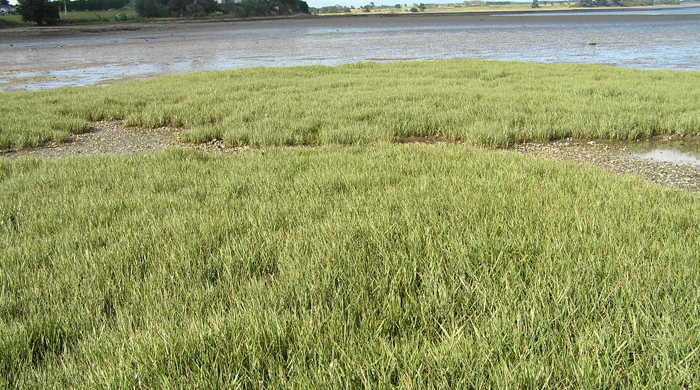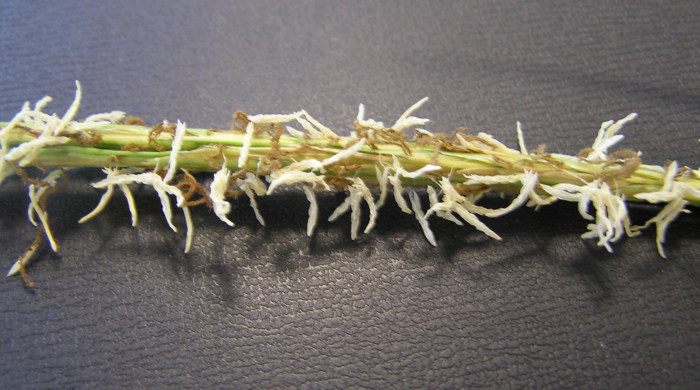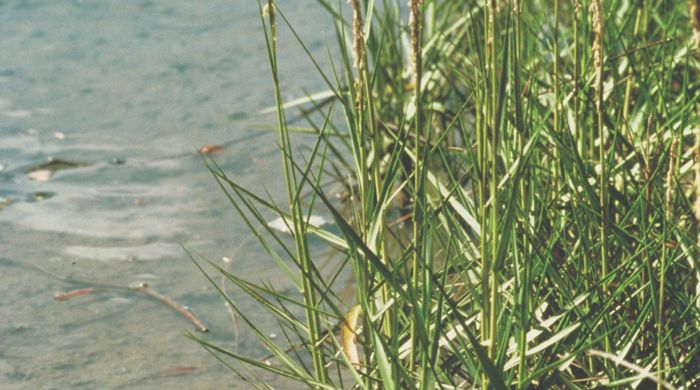Sporobolus alterniflorus, Sporobolus anglicus and Sporobolus x townsendii
Spartina
Family: Poaceae
Origin: Europe, North and South America

Regional Pest Management Plan (RPMP) status
- Hauraki Gulf Controlled Area Notice pest
- Whole region — Progressive containment, council delivered
General description
Erect, perennial, clump-forming grasses < 1 m tall. Rhizomes are fleshy. Note: Spartina is under Sustained Control in the Kaipara Harbour.
Note: these species were previously named Spartina alterniflora, Spartina anglica and Spartina x townsendii.
What you need to know
To help protect our environment, you must not breed, distribute, release or sell spartina within the Auckland region.
Within the Spartina control zone in the Kaipara Harbour:
- You must not plant spartina, unless you are transferring an existing plant on your land to another location within the boundaries of the same property
- You must destroy any spartina on land that you occupy if it has been planted in breach of the above rules and you are directed to do so by an authorised person.
Auckland Council will manage spartina at all sites where it is known to occur outside of the Kaipara Harbour zone.
If you see spartina outside of the Kaipara Harbour zone, please report it to Auckland Council at pestfree@aucklandcouncil.govt.nz.
Habitats
Saline wetlands, estuaries.
Dispersal
Vegetative spread from rhizome fragments, dispersed by water. S. anglica and S. alterniflora can set seeds, also dispersed by water. Human-mediated dispersal through deliberate plantings.
Impact on environment
Forms dense swards. Traps sediment, raising levels above the high tide mark and reducing large estuaries and shallow harbours to thin drains surrounded by rough pastures. Destroys intertidal zonation and habitat and smothers tauranga mātaitai shellfish beds. Can lead to immense biodiversity loss.
Control
Site management
Spray on an outgoing tide. Follow up each year in February and November.
Recommended approaches
Do not attempt to undertake control of this species (excluding Kaipara Harbour). Please report to Auckland Council.
Physical control
Method: Dig out.
Plant parts requiring disposal: All parts.
Disposal options: Remove to greenwaste or landfill.
Biocontrol
Biocontrol is currently not available for this species.
Community agrichemical control recommendations
Certified Handler/Experienced agrichemical user: Foliar spray with 200ml glyphosate green per 10L of water and 20ml penetrant in February and November. Foliar spray with 100ml haloxyfop-P-methyl per 10L of water.
Caution: When using any herbicide or pesticide please read the label thoroughly to ensure that all instructions and safety requirements are followed.






